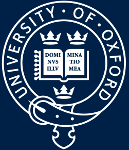

DPhil Theses
Studies of antibody conformational ensembles towards better understanding of structure and function
Bora Guloglu, 2024
Designing more efficient compound libraries for crystallographic fragment screening
Anna Carbery, 2023
Investigating graph neural networks and classical feature-extraction techniques in activity-cliff and molecular property prediction
Markus Dablander, 2023
Investigating B-cell repertoire data using deep learning approaches to aid in the development of antibody therapeutics
Tobias Olsen, 2023
Antibody structure prediction using deep learning
Brennan Abanades, 2023
Leveraging BCR data to improve computational design of therapeutic antibodies
Sarah Robinson, 2023
Deep neural networks for pose validation, affinity prediction, and input attribution
Jack Scantlebury, 2023
Novel reaction-based De Novo molecular design in 2D & 3D using deep Q-Learning
An Goto, 2022
Computational methods for rapid structural modelling of antibody-antigen interactions to improve identification of antigen-specific antibodies from BCR-seq data
Eve Richardson, 2022
Construction of gene coexpression networks and transcriptomic analysis for Rhizobium leguminosarum
Javi Pardo Diaz, 2022
Machine learning approaches for computer aided drug discovery
Marc Moesser, 2022
Computational approaches to molecular fragment elaboration
Tom Hadfield, 2022
Fragment hotspot mapping to drive the rational elaboration of fragment screening hits
Mihaela Smilova, 2022
Computational network models for molecular, neuronal and brain data in the presence of long range dependence
James Wilsenach, 2021
Protein sequence information encodes more than the global minimum structure
Dominik Schwarz, 2021
Deep learning algorithms for predicting association between antibody sequence, structure, and antibody properties
Constantin Schneider, 2021
Deep learning approaches for pre-clinical drug discovery
Fergus Imrie, 2021
Protein folding and structure prediction: biological and physical perspectives
Mark Chonofsky, 2020
Using antibody next generation sequencing data to aid antibody engineering
Aleksandr Kovaltsuk, 2020
Developing novel scoring functions for protein-ligand docking using machine learning
Fergus Boyles, 2020
Understanding small molecule conformations using statistical machine learning
Lucian Chan, 2020
Structure-aware tools for the development of therapeutic antibodies from natural immunoglobulins
Matthew Raybould, 2020
In silico characterisation of antigen receptor binding site structures
Wing Ki (Catherine) Wong, 2020
Exploring protein folding mechanisms to enable the protein structure prediction of previously intractable targets
Clare West, 2019
Multiple crystallographic dataset analysis to explore crystallographic occupancy and the conformational states of proteins
Elliot Nelson, 2019
In silico tools to aid medicinal chemistry: optimising bromodomain inhibitors
Joe Bluck, 2019
Confidence in protein interaction networks
Lyuba Bozhilova, 2019
Structure-based ligand discovery: elaborating fragment hits in silico
Susan Leung, 2019
Generalised networks for protein interaction analysis
Florian Klimm, 2018
Prioritisation of active compounds that are novel scaffolds using a data-driven approach
Hannah Patel, 2018
Inferring the translation speed and determining its relationship to the protein structure produced
Alistair Martin, 2017
Using structural fragments to design antibody binding sites
Cristian Regep, 2017
Computational studies of structural motifs and cotranslational folding mechanisms in membrane and soluble proteins
Eleanor Law, 2017
Understanding antibody binding sites
Jaroslaw Nowak, 2017
Modelling protein-protein interaction networks
Luis Ospina, 2017
Hybrid methods for protein loop modelling
Claire Marks, 2016
Development of computational methodologies for antibody design
Jinwoo Leem, 2016
Application of multi-resolution partitioning of interaction networks to the study of complex disease
Malte Luecken, 2016
Multi-dataset electron density analysis methods for X-ray crystallography
Nicholas Pearce, 2016
Novel applications for hierarchical natural move Monte Carlo simulations: from proteins to nucleic acids
Samuel Demharter, 2016
Development of tools to provide prioritisation and guidance in the development of chemical probes and small molecule leads
Anthony Bradley, 2015
Molecular architecture of SAS-5 enables construction of a daughter centriole
Kacper Rogala, 2015
Radiation damage in protein crystallography: susceptibility study
Markus Gerstel, 2015
Biologically inspired de novo protein structure prediction
Saulo de Oliveira, 2015
Design, implementation and experimental validation of a network-based model to predict mitotic microtubule regulating proteins
Faisal Khan, 2014
Exploring the fold space preferences of ancient and newborn protein superfamilies
Hannah Edwards, 2014
Computational studies of protein helix kinks
Henry Wilman, 2014
Variable domain orientations in antigen receptors
James Dunbar, 2014
Data driven approaches to improve the drug discovery process: a virtual screening quest in drug discovery
Jean-Paul Ebejer, 2014
Mutational analysis of isoform selectivity and conformational equilibria in protein kinase inhibition
Leila Alexander, 2014
Fold recognition and alignment in the ‘twilight zone’
Jamie Hill, 2013
Computational antibody design
Konrad Krawczyk, 2013
Role of mutual information for predicting contact residues in proteins
Mireille Gomes, 2013
Structural modelling of transmembrane domains
Sebastian Kelm, 2012
Modelling and comparing protein interaction networks using subgraph counts
Tiago Rito, 2012
Protein loop structure prediction
Yoonjoo Choi, 2012
Conservation, error and dynamics in protein interaction networks
Waqar Ali, 2011